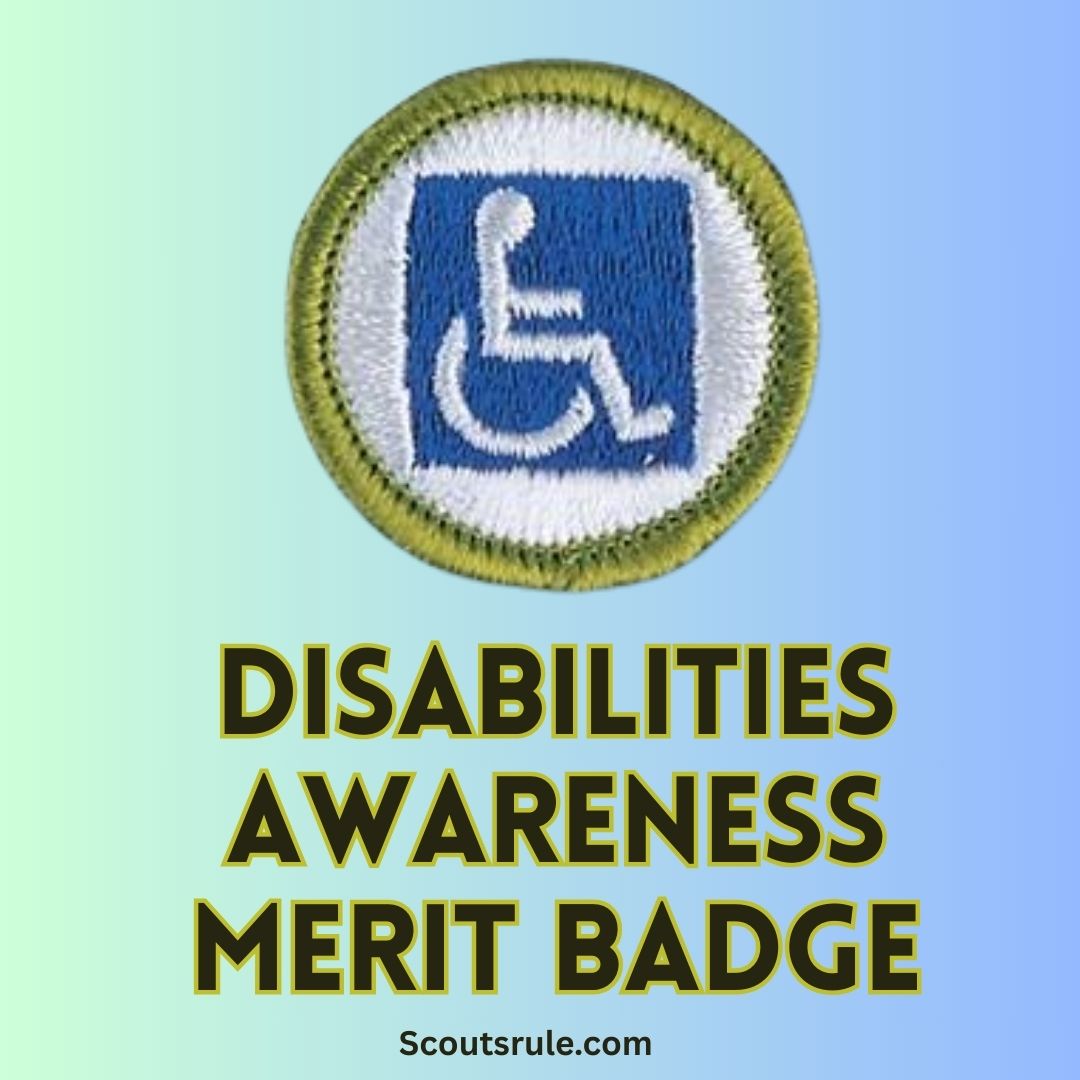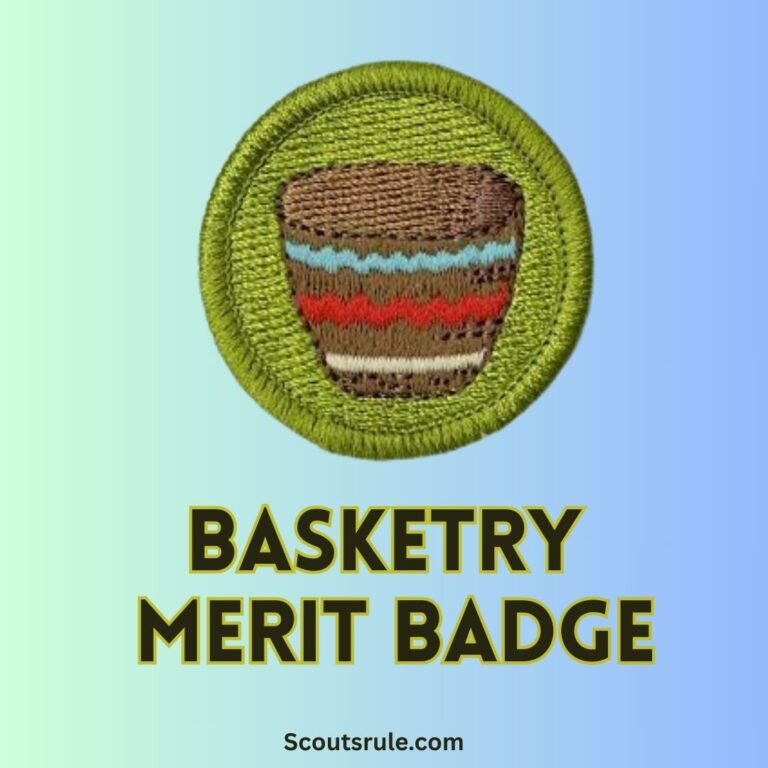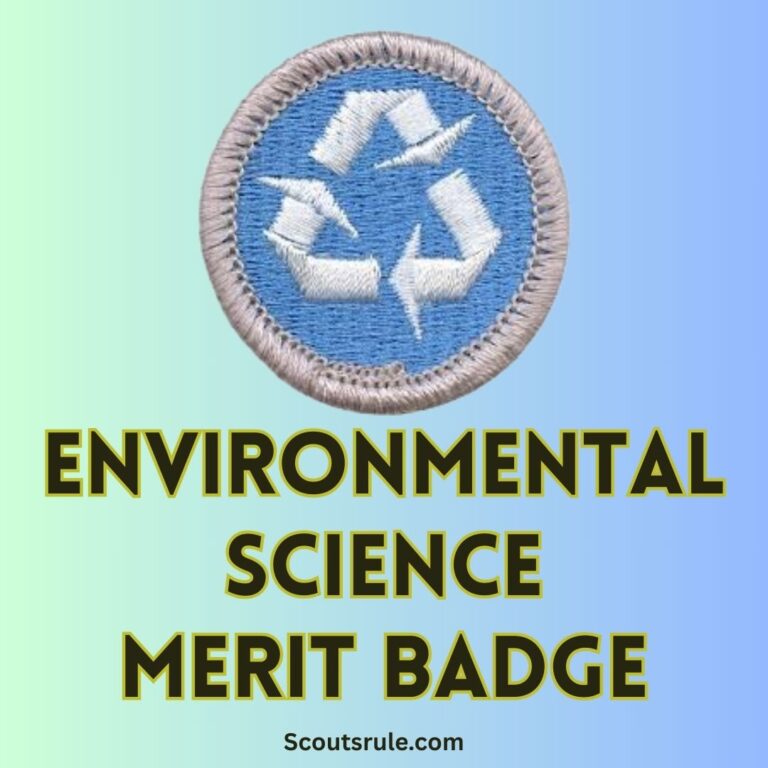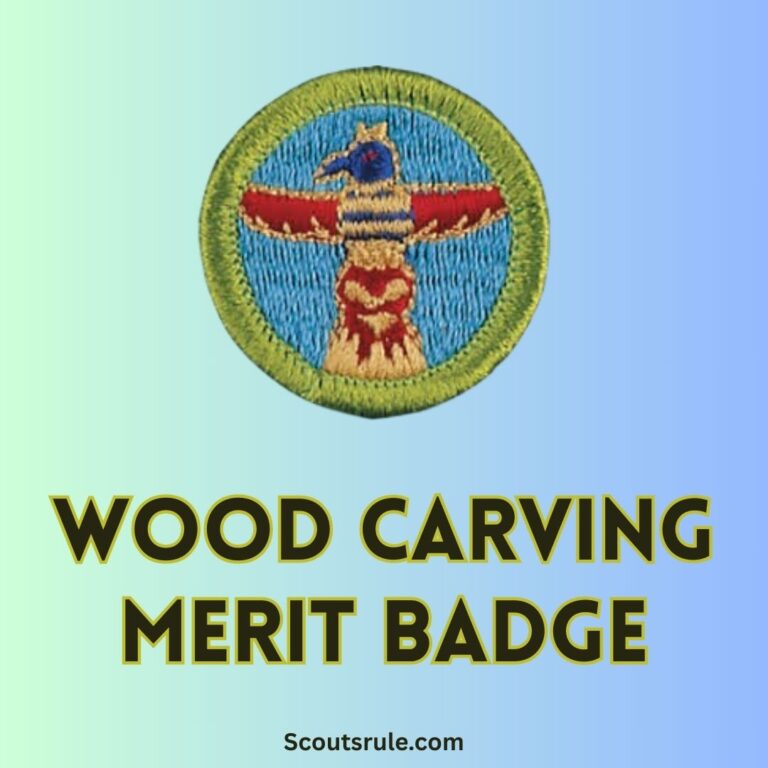
In today’s diverse and interconnected society, understanding disabilities is essential for promoting inclusion and respect. The Disabilities Awareness Merit Badge helps Scouts examine the challenges faced by people with disabilities, learn about legislation designed to protect their rights, and discover ways to foster an inclusive environment. Earning this badge is not only about acquiring factual information; it is a journey toward empathy, advocacy, and proactive community engagement.
Post Contents
- 1. The Importance of Disabilities Awareness
- 2. Purpose and Objectives of the Merit Badge
- 3. Key Terminology in Disabilities Awareness
- 4. Overview of Merit Badge Requirements
- 5. Requirement 1: Discussing Key Terms
- 6. Requirement 2: Visiting an Organization or Facility
- 7. Requirement 3: Experiencing Life with Disabilities
- 8. Requirement 4: Studying Accommodations
- 9. Requirement 5: Advocacy for Disability Rights
- 10. Requirement 6: Commitment to Greater Awareness
- 11. Requirement 7: Exploring Careers in Disabilities Services
- 12. Additional Resources and Tips
- Embracing an Inclusive Future
1. The Importance of Disabilities Awareness
Disabilities affect millions of people worldwide, whether the disabilities are visible or invisible, physical or cognitive. By exploring the different aspects of disability—from everyday challenges to systemic issues—Scouts gain insight that can lead to a higher level of sensitivity, better communication, and effective advocacy in their communities. Moreover, the skills learned in this merit badge—such as researching, interviewing, critical thinking, and presentation—can serve as valuable tools in many aspects of life.
2. Purpose and Objectives of the Merit Badge
The Disabilities Awareness Merit Badge is designed with multiple objectives in mind:
- Educational Growth: Develop a clear understanding of disabilities, including the language and concepts that promote respectful discussion and accurate representation.
- Cultural Sensitivity: Learn how society accommodates individuals with disabilities and identify the challenges they face in everyday environments.
- Advocacy and Action: Encourage Scouts to think about how they can make schools, communities, and public spaces more accessible and inclusive.
- Career Exploration: Explore various career paths in disability services, rehabilitation, and advocacy work as well as opportunities to support inclusion through education, social work, or public policy.
- Practical Experience: Engage directly by visiting institutions, interacting with professionals, and experiencing on-the-ground advocacy, so that theoretical knowledge merges with real-life application.
Through these diverse objectives, the merit badge provides a solid foundation for a lifetime of informed and compassionate involvement in issues related to disability.
3. Key Terminology in Disabilities Awareness
Before you begin your merit badge projects, it’s essential to understand a set of key terms that underpin the field of disabilities awareness. Mastery of these terms lays the groundwork for respectful communication and effective advocacy.
Defining Disability and Associated Terms
Here are some foundational definitions and concepts:
- Disability: A physical or cognitive condition that substantially limits one or more major life activities. This definition encompasses visible disabilities (such as mobility limitations) and invisible disabilities (such as learning disabilities or chronic health issues).
- Accessibility: The design of products, devices, services, and environments for people with disabilities. Accessibility ensures that all individuals have equal access to facilities and opportunities.
- Adaptation: Any modification made to improve the performance or functionality of an environment, product, or service for someone with a disability. Adaptations can be as simple as providing special seating or as complex as installing adaptive technology.
- Accommodation: Specific adjustments or modifications provided to enable someone with a disability to participate fully. In educational settings, these might include extra time on tests, assistive devices, or specialized instructional methods.
- Invisible Disability: Conditions or impairments that are not immediately apparent, such as chronic pain, mental health disorders, or learning disabilities. Recognizing invisible disabilities is vital, as they are often underestimated or misunderstood.
Person-First Language and Inclusion
The way we talk about disabilities matters significantly for fostering respect and dignity. Two important concepts include:
- Person-First Language: This means saying “a person with a disability” rather than “a disabled person.” The emphasis is on recognizing the individual’s human qualities rather than defining them solely by their disability.
- Inclusion: The practice of ensuring that all individuals, regardless of their abilities, are welcomed and able to participate fully in society. Inclusion also means evaluating and modifying policies, practices, and environments to remove barriers to full engagement.
Understanding and using respectful language is a key competency for any journalist, educator, or community leader. The merit badge requires you to discuss these terms with your counselor, ensuring that you can articulate their meaning and importance in your own words.
4. Overview of Merit Badge Requirements
The Disabilities Awareness Merit Badge is structured around several requirements that help you explore the topic from multiple dimensions:
- Requirement 1: Terms. Define and discuss key terms related to disabilities awareness. This is your foundation.
- Requirement 2: Visit. Visit an organization or facility that assists people with disabilities. This might be a local rehabilitation center, a community center with special services, or an agency that promotes accessibility.
- Requirement 3: Experiences. Engage in a project or interview with someone who has a disability to gain firsthand insights into their daily experiences and challenges.
- Requirement 4: Accommodations. Investigate how local community facilities, such as schools or public buildings, are made accessible. You might examine ramps, elevators, signage, and other accommodations required by law.
- Requirement 5: Advocacy. Propose or participate in an advocacy project designed to promote improvements in accessibility or to raise awareness about disability rights.
- Requirement 6: Commitment. Demonstrate a personal commitment to fostering inclusion, possibly by outlining actions you plan to take to help your school or community become more accessible.
- Requirement 7: Professions. Research careers related to disabilities, such as jobs in rehabilitation, occupational therapy, special education, or disability advocacy, and discuss your findings with your counselor.
Each of these sections requires both research and practical engagement, allowing you to learn not just the theory behind disabilities but also to experience and contribute to positive change.
5. Requirement 1: Discussing Key Terms
In this initial step, you are expected to meet with your counselor to define and explore key terminology. Prepare by reviewing the definitions provided earlier and consider these guidelines:
- Prepare Written Definitions: Create a written list of terms such as “disability,” “accessibility,” “adaptation,” “accommodation,” “invisible disability,” “person-first language,” and “inclusion.” Explain each term in your own words, ensuring a thorough understanding.
- Discuss Examples: Provide real-life examples. For instance, explain how a building might be made accessible with ramps and dedicated parking spaces, or describe a situation where person-first language makes a positive difference in communication.
- Relation to Daily Life: Reflect on why each term matters. Think about how respectful language and thoughtful adaptations can improve the quality of life for an individual.
Once you have prepared your definitions and discussion points, share them with your counselor. This requirement is designed to ensure that you can articulate the foundational language of disabilities awareness clearly and respectfully.
6. Requirement 2: Visiting an Organization or Facility
The next requirement involves a real-world exploration of community resources:
- Choosing a Venue: Identify an organization, facility, or agency that serves people with disabilities. This could be a rehabilitation center, a community center with accessible programs, or a nonprofit dedicated to disability advocacy.
- Preparing Questions: Create a list of questions to ask during your visit. Examples might include:
- What services do you provide for people with disabilities?
- How do you work to make your facility accessible?
- What challenges do you encounter in serving your clients?
- Documenting Your Experience: Take notes and, if possible (with permission), photographs or recordings to document your visit. Prepare a report summarizing your observations, what you learned about the services provided, and how the organization works to foster inclusion.
- Discussion with Your Counselor: After the visit, meet with your counselor to discuss your experience. Reflect on the differences between what you knew before and what you learned through direct observation.
This hands-on experience is crucial—it transforms abstract concepts into tangible examples and provides you with the opportunity to interact directly with community professionals.
7. Requirement 3: Experiencing Life with Disabilities
For this requirement, you are expected to gain firsthand experience or insights into living with a disability:
- Conduct an Interview or Volunteer: Arrange a meeting with an individual who has a disability. With parental permission and counselor guidance, prepare a thoughtful interview. Ask about daily challenges, accommodations that significantly help, and advice for fostering better societal understanding. Alternatively, volunteer at an organization that supports people with disabilities. In either case, be prepared to listen attentively and respectfully.
- Reflect on Your Experience: After your interview or volunteer session, write a summary of your experience. Focus on what surprised you, what you learned, and how your views evolved.
- Emotional and Social Impact: Discuss how interacting with someone who has a disability has affected your perspective on inclusion and diversity. How can the insights gained help you act as an advocate for a more accepting community?
This requirement is designed not only to build your empathy but also to help you understand the practical challenges that people with disabilities face on a daily basis.
8. Requirement 4: Studying Accommodations
Understanding accessibility in your community is a key aspect of disabilities awareness:
- Assess Local Facilities: Visit places such as your school, local library, or community center. Take note of accommodations like ramps, elevators, automatic doors, signage in Braille, and other adaptive technologies.
- Evaluate According to Standards: Familiarize yourself with common standards for accessibility (such as those outlined by the Americans with Disabilities Act, ADA). Determine whether local facilities meet these guidelines.
- Report Findings: Write a report detailing your observations. Discuss areas that were well-adapted, as well as those that might benefit from improvement.
- Personal Reflection: Reflect on how improved accommodations can enhance independence and quality of life for individuals with disabilities. Consider proposing recommendations that could be discussed with school administrators or community leaders.
Through this investigation, you not only learn about physical accessibility but also gain insight into design principles that make public spaces more inclusive.
9. Requirement 5: Advocacy for Disability Rights
Advocacy is a powerful tool for change. This requirement asks you to consider how you can help promote the rights of individuals with disabilities:
- Identify an Advocacy Issue: Focus on a local issue related to disability rights or accessibility. This might involve advocating for enhanced physical access at your school, creating awareness about respectful language, or supporting technology that aids independence.
- Develop an Action Plan: Draft a plan that details how you might raise awareness through presentations, social media campaigns, or by organizing a community event. Explain the benefits of your proposed ideas.
- Engage in the Dialogue: If possible, implement part of your plan or participate in a related event. Document your actions and the response from the audience.
- Discussion with Your Counselor: Summarize your advocacy efforts in a discussion or written report. Highlight what worked, what challenges you faced, and how you might refine your approach in the future.
This requirement encourages you to move beyond understanding to active participation in making society more inclusive and accessible.
10. Requirement 6: Commitment to Greater Awareness
The Disabilities Awareness Merit Badge also challenges you to show your commitment to promoting inclusion:
- Develop a Personal Pledge: Write a personal statement or pledge that outlines how you plan to support individuals with disabilities and promote accessibility and inclusion in your community.
- Plan a Presentation or Workshop: Consider creating a presentation or workshop for your classmates or community that educates them about disabilities awareness. Use visual aids, interactive activities, and real-life examples to convey your message.
- Documentation and Reflection: Keep a record of your planning process, including any research, materials prepared, and feedback received. Reflect on how these commitments might influence your future interactions and efforts in advocacy.
This task is about long-term personal growth and solidifying your role as someone who champions diversity and accessibility.
11. Requirement 7: Exploring Careers in Disabilities Services
Finally, the merit badge invites you to explore career paths that support people with disabilities:
- Research Different Professions: Identify careers related to disabilities services. Options might include special education teachers, rehabilitation therapists, occupational therapists, speech-language pathologists, social workers, or positions in nonprofit organizations focused on disability rights.
- Interview Professionals: If possible, arrange an interview with someone in one of these fields to discuss their career path, the education and training required, and the rewards and challenges of their job.
- Compile a Career Report: Write a report or prepare a presentation summarizing your findings. Explain which career options interest you most and why. Consider the skills you have already developed through this merit badge and how they connect to future opportunities.
By exploring these careers, you will gain valuable insights into how knowledge of disabilities can be transformed into professional expertise and a meaningful career.
12. Additional Resources and Tips
To succeed in earning the Disabilities Awareness Merit Badge, consider these additional activities and resources:
- Read Articles and Books: Look for resources on disabilities rights, personal stories of overcoming challenges, and comprehensive guides on accessibility. Websites like ScouterMom.com, the official BSA Merit Badge page, and local disability advocacy organizations may offer valuable insight.
- Attend Workshops or Conferences: If available, attend local seminars or workshops about accessibility or disability rights. These events not only expand your knowledge but also let you network with professionals in the field.
- Involve Your Community: Talk with teachers, parents, or community leaders about local facilities and initiatives related to accessibility. Collaboration can lead to innovative ideas for advocacy projects.
- Keep a Reflective Journal: Document all your experiences, interviews, visits, and research in a journal. This record will be invaluable when discussing your progress with your counselor and can serve as a source of inspiration for future projects.
- Utilize Digital Resources: Online platforms like SlideShare, educational YouTube channels (with appropriate parental guidance), and academic databases can provide visuals, case studies, and diverse perspectives on disabilities awareness.
These resources will help you build a well-rounded understanding of the issues and provide practical techniques for effective advocacy and inclusive thinking.
Embracing an Inclusive Future
The Disabilities Awareness Merit Badge represents more than a set of requirements—it challenges you to delve deeply into a subject that profoundly affects society. By studying key terminology, engaging with people and organizations, analyzing community accommodations, and exploring advocacy, you not only fulfill badge requirements but also become a more empathetic, informed, and active citizen.Embracing this merit badge means you are committed to a future in which every person is respected and provided equal opportunities. Whether you choose to pursue a career in one of the many fields related to disabilities services or simply use your knowledge to promote inclusive practices in your school and community, the skills and values you develop now will benefit you—and those around you—throughout your life.

Hi, Robin here, A former lead Scout and here I share my inspiring stories about USA Scouts, leadership, adventure, how to guides and more.






